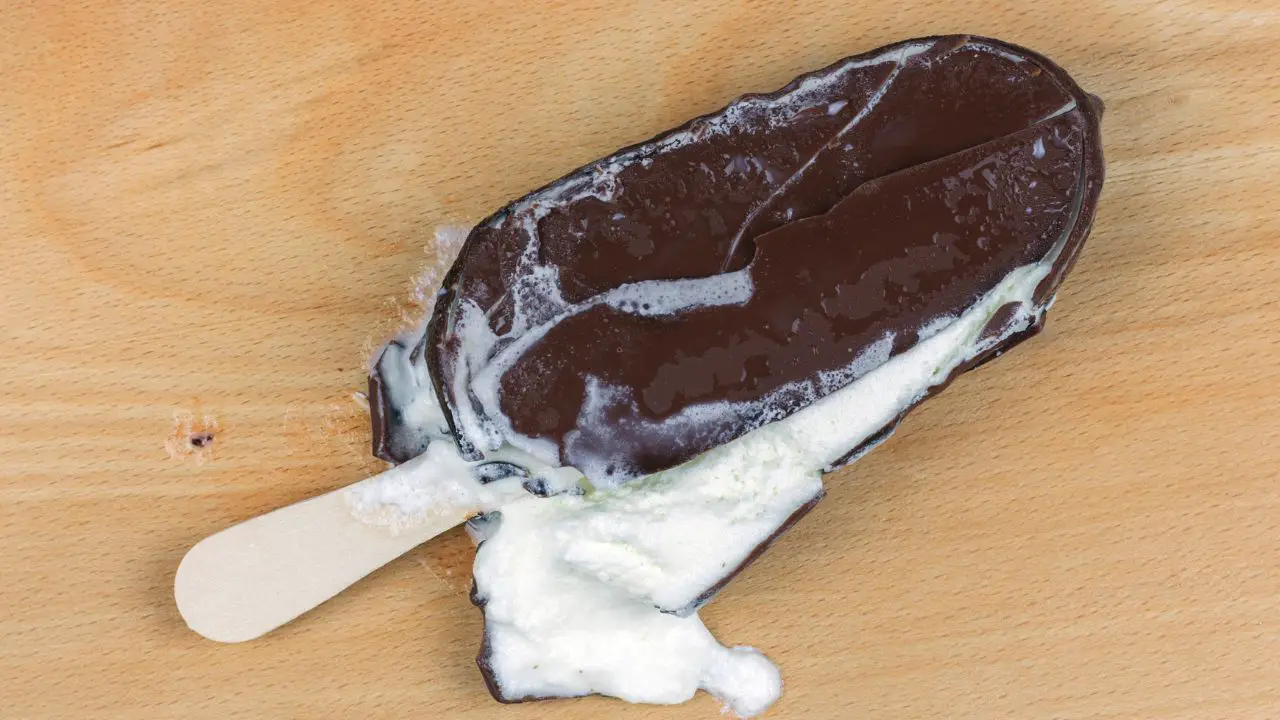Ever left your ice cream out too long or found that your ice cream melted on the way home? Can you refreeze it? In this post, I will answer that crucial question: can you refreeze ice cream? I will also explore the science and safety of refreezing melted ice cream. Keep reading to learn how to revive your sweet treat or when it’s time to let it go.
What Makes Ice Cream, Ice Cream?
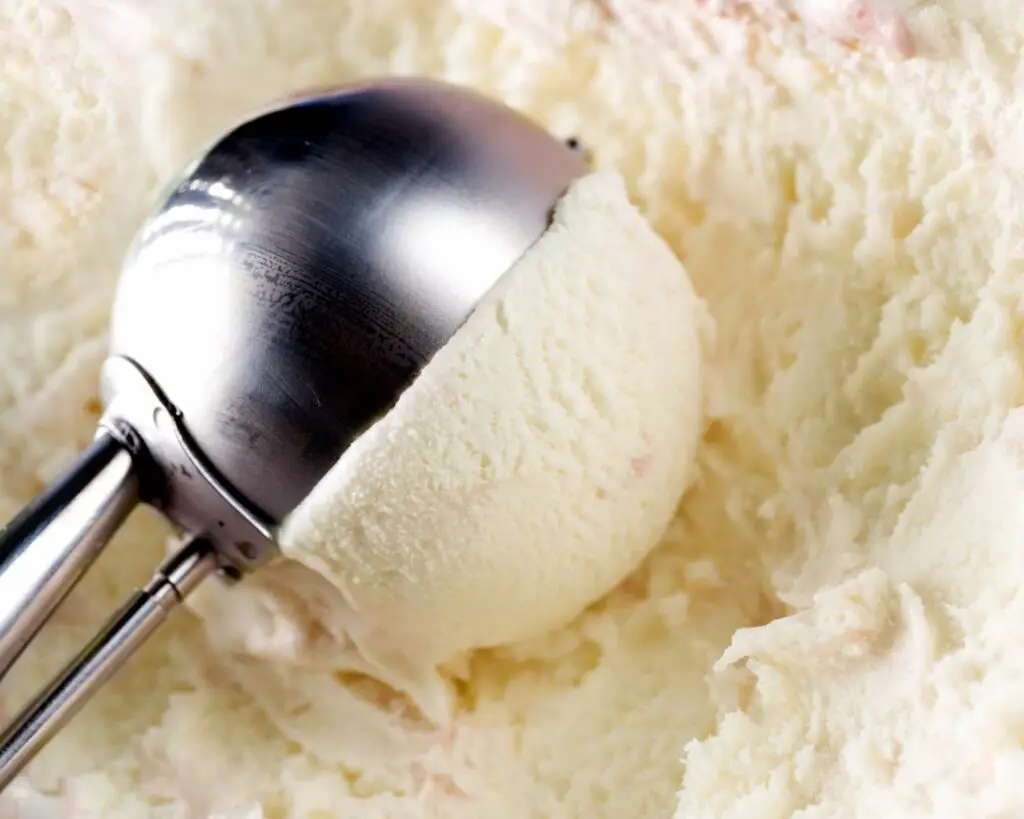
Ice cream is a simple yet intricate delicacy. It primarily consists of milk or cream, sugar, and often eggs. These ingredients are mixed and churned together before they are frozen. But making ice cream isn’t just about freezing; it’s an art of balance and texture.
It’s also worth noting that different flavors come with their unique sets of ingredients, which could include things like vanilla beans, chocolate chips, or fruit purees.
The Role of Air and Ice In Ice Cream
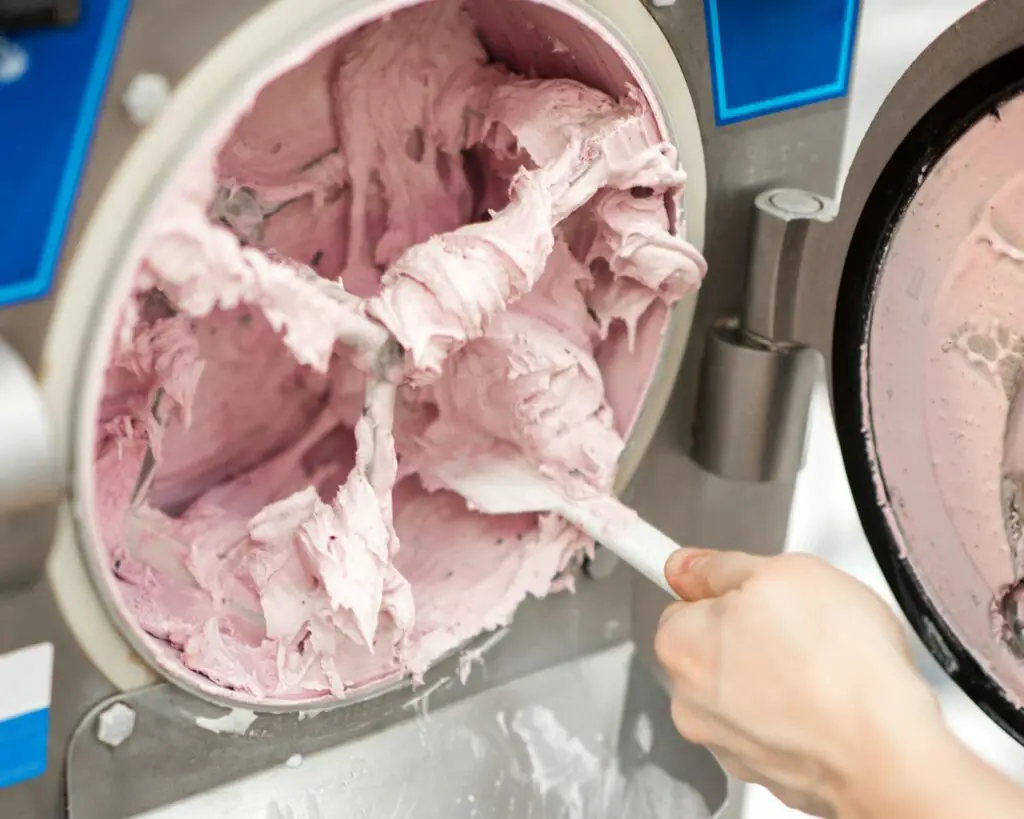
Air is introduced into the mixture during the churning process, which gives the ice cream its light, airy texture. Meanwhile, small ice crystals form during the freezing process, which helps the ice cream maintain a solid structure.
Together, the air and ice crystals create that creamy, spoonable delight we all love. When churned correctly, the ice cream captures air bubbles that contribute to its fluffy consistency.
Why Does Melting Ruin Ice Cream?
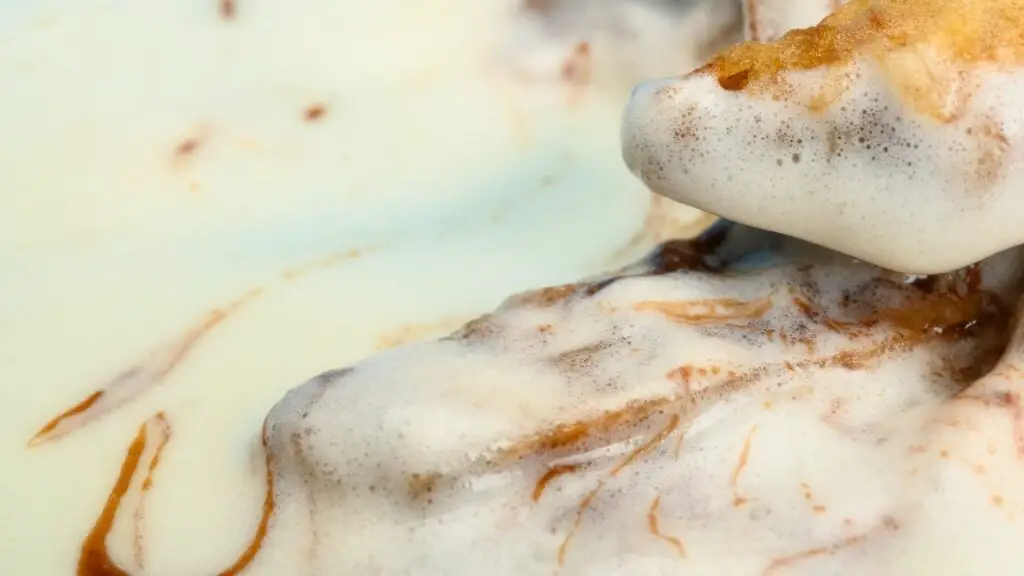
Ice cream is delicate. When it melts, you lose both the incorporated air and the intricate structure of tiny ice crystals. What you’re left with is a soupy mess. When refrozen, larger, unpleasant ice crystals form and the air is no longer uniformly distributed. This leaves you with a dessert that’s far from the smooth and creamy texture you initially enjoyed.
The taste may also be impacted, giving you an ice cream that is less flavorful than before.
Did You Know? According to food scientists, ice cream with a higher fat content will melt more slowly than those with a lower fat content. Brands often promote this as a sign of premium quality.
Ever heard of ‘The Ice Cream Canteen? It’s a must-try! Keeps your ice cream frozen for 4 hours on the move and up to 8 hours in a cooler. It’s a game-changer, especially for your favorite Ben & Jerry’s or Baskin-Robbins pint.
TAP ON IMAGE TO VIEW PRICE
Can You Refreeze Ice Cream And Is It Safe?
Yes, you can refreeze ice cream, but the quality in terms of texture and flavor may be compromised. If the ice cream has melted to a liquid state and has been left out for an extended period, especially in warm temperatures, it may not be safe to refreeze due to the risk of bacterial growth. Always use your best judgment when it comes to food safety.
Keep in mind that, dairy products are notorious for spoiling quickly under warm conditions. Therefore, it’s essential to take precautions to prevent foodborne illnesses.
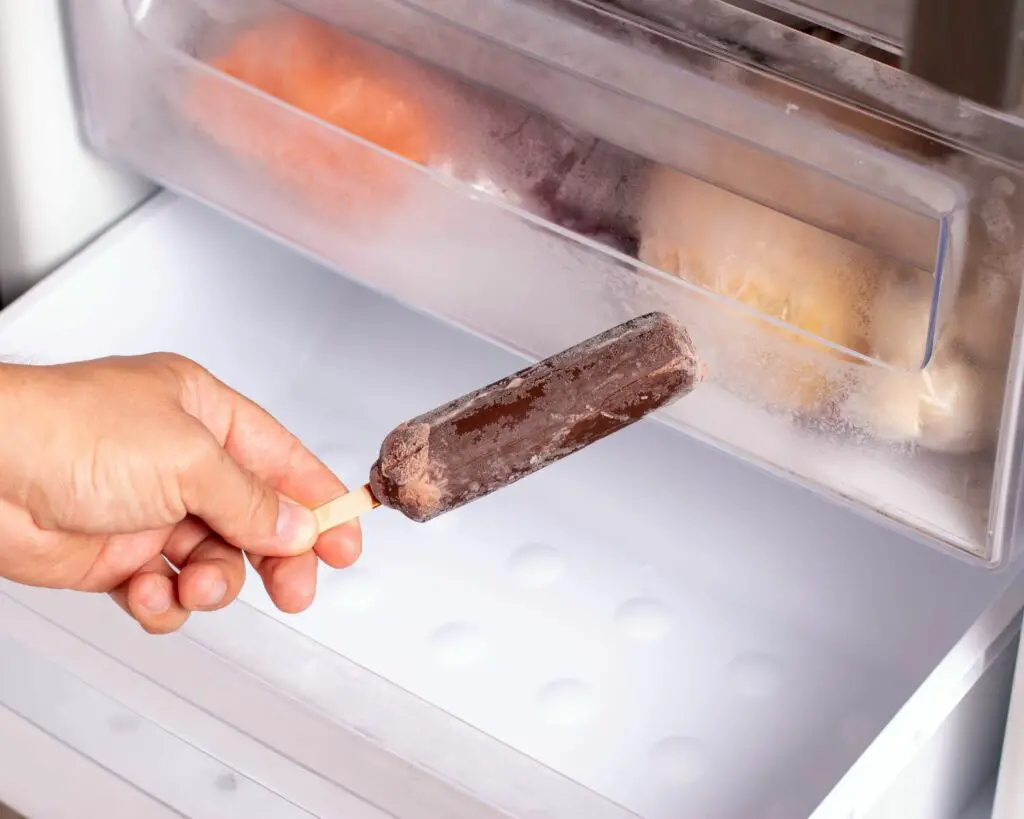
It’s generally not advisable to refreeze ice cream that has been left out for more than two hours at room temperature or one hour if the temperature is above 90°F (32°C). Bacterial growth is expedited in warmer conditions, which could make consuming the refrozen ice cream a health risk. Moreover, the longer it sits out, the greater the risk of spoilage, making it less palatable and possibly unsafe to eat.
Left Ice Cream Out Overnight: Is It Safe to Eat?
If you’ve ever left your ice cream out overnight, especially in warmer conditions, it’s not a good idea to eat it. Here’s why: when ice cream is on your kitchen counter at room temperature for more than 2 hours, especially overnight, it can become a breeding ground for bacteria. This might not be great for your stomach.
Take it from me; if you’ve ever left ice cream out overnight, you know it’s a sad sight to behold the next morning. Trust me, it’s far from appetizing! So, for the sake of your health and your taste buds, it’s better to just let it go and toss it out. Why take the risk, right?
How to Properly Refreeze Your Ice Cream?
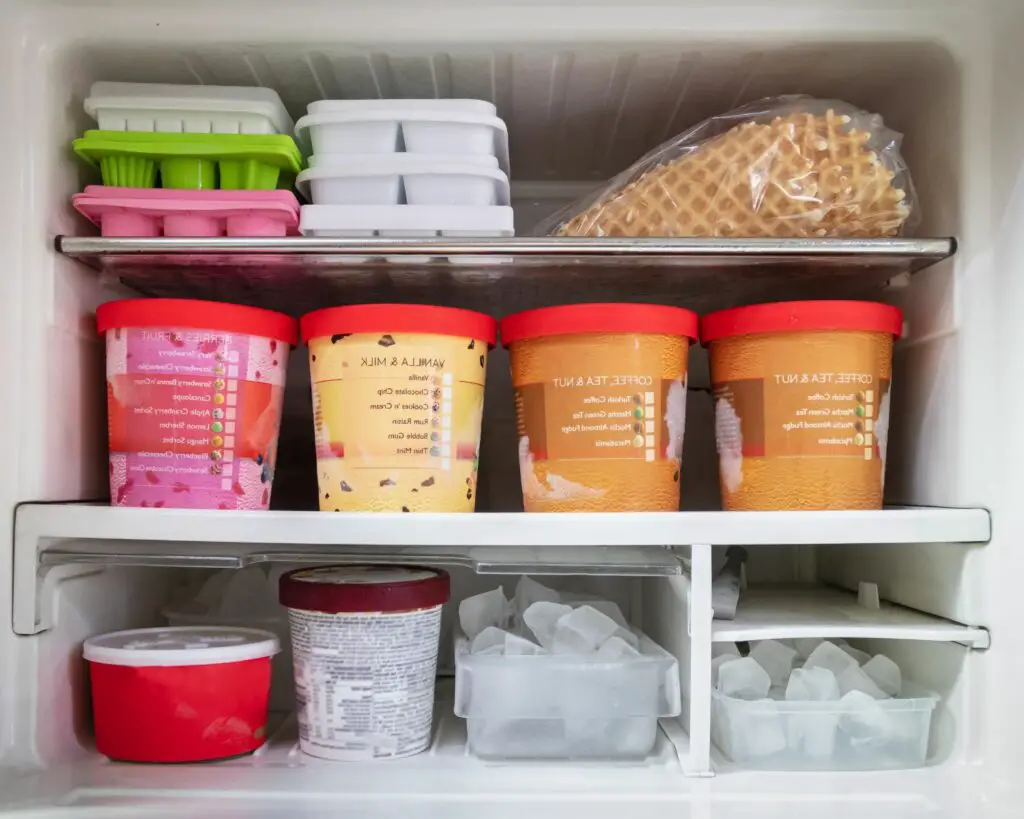
1. Core Consistency
Firstly, check the core of the ice cream. If it’s still somewhat firm and only the outer layer is partially melted, this is a good sign. It likely means that the majority of the ice cream stayed at a safe temperature and could be safely refrozen, retaining its original texture.
2. Liquid State
However, if your ice cream has totally melted into a puddle, think twice before tossing it back into the freezer. The risk of bacterial growth ramps up, especially if it’s been sitting out on a warm kitchen counter for a while.
Plus, let’s be honest, refreezing it won’t bring back that creamy goodness we all love. You’re more likely to end up with a rock-hard, icy lump instead.
3. Smell and Color
Finally, always trust your senses. If the ice cream has any odd smells or has changed in color, these are red flags. It’s a strong indication that the ice cream has started to spoil and should not be consumed or refrozen. Just throw it away.
The Refreezing Process
So, you’re thinking about refreezing that ice cream? Well, it’s not just a matter of tossing it back in the freezer and hoping for the best. There are some helpful steps you’ll want to follow if you’re aiming to keep that texture and flavor as close to the original as possible.
Airtight Container or Original Tub?
You can refreeze ice cream in the tub it came in, but it’s better to use a container with a tight lid. The original tub can let in air, which can cause a freezer burn. A tightly sealed container helps avoid this.
So, transfer the melted ice cream into an airtight, freezer-safe container to minimize moisture and prevent freezer burn.
Excluding Air
After transferring, press a piece of plastic wrap directly onto the surface of the ice cream. This helps to exclude any additional air and minimizes the formation of ice crystals on the surface.
Location in Freezer and Temperature Setting
Place the airtight container with your ice cream at the back of the freezer, where it’s the coldest. Adjust your freezer to its lowest setting to facilitate rapid freezing, which helps in achieving a smoother texture.
Did You Know? Research indicates that fluctuating freezer temperatures, common in home freezers, can affect the rate of ice crystal growth in melted and refrozen ice cream, leading to poor texture.
Read Also: Your Fridge or Freezer Door Was Left Open All Night — Now What?
Optional: Stirring
If you want to keep the texture of your ice cream as smooth as possible, it’s a good idea to stir it during the initial stages of refreezing it won’t magically revive it back to its fluffy and creamy original state, but it sure helps.
Here’s how and why to do it:
How to Do It: Place the airtight container with the ice cream in the freezer for half an hour. After 30 minutes, take it out and use a spoon to stir the ice cream gently but thoroughly, making sure to mix the edges into the center. Put the container back in the freezer, and repeat the process one more time after another half-hour has passed.
Why Do It: Stirring the ice cream helps break up any large ice crystals that might form during the freezing process. Large ice crystals can make the ice cream feel gritty rather than smooth. By stirring, you help distribute the smaller, more desirable ice crystals throughout the ice cream, which helps maintain a creamy texture.
Taking a few extra minutes to stir your ice cream during the refreezing process might help you avoid ending up with a milky, frozen clump of ice.
Action Steps for Ice Cream with Add-Ins
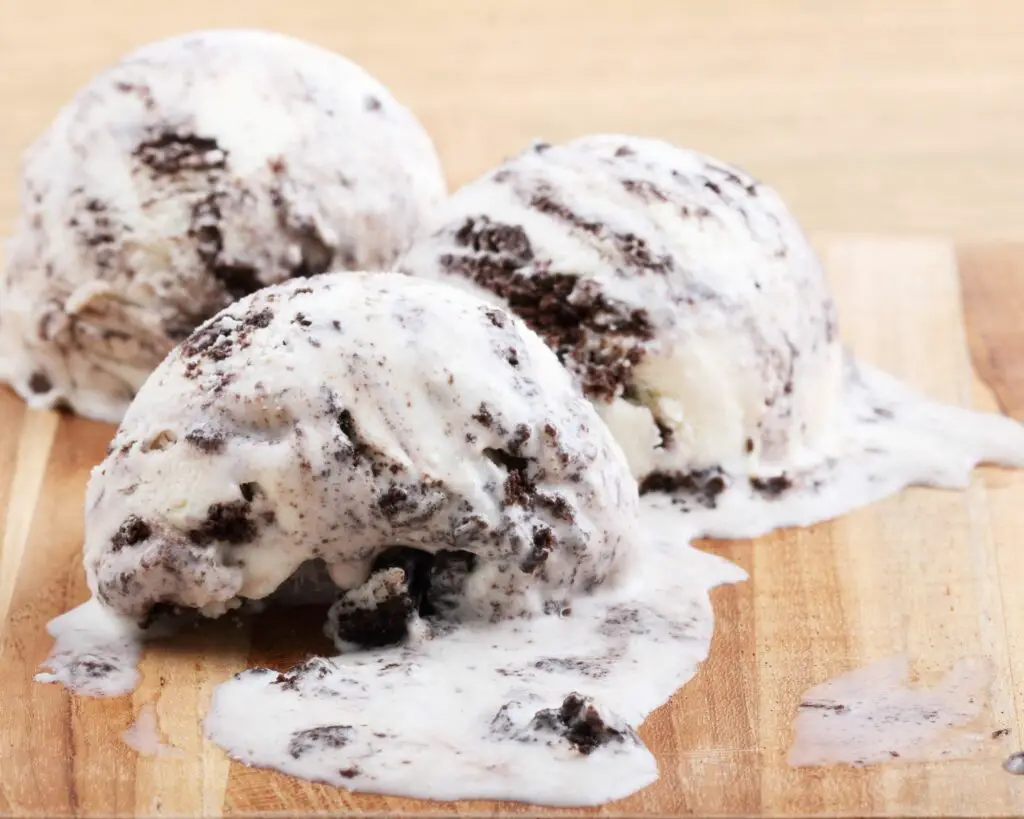
When refreezing melted ice cream that contains special ingredients like fruits, chocolate chips, or cookie dough, be aware that these add-ins can be impacted differently. Fruits may release water, leading to ice crystals, while chocolate could sink to the bottom.
If your ice cream is loaded with extra goodies like chocolate chips or fruit chunks, consider giving it a quick stir halfway through refreezing. This can help spread those tasty add-ins more evenly. Otherwise, you might find them all frozen together in a big clump at the bottom.
Ice Cream with Jam Swirls: Refreezing Tips

When your ice cream with jam swirls melts, the jam is likely to melt and blend into the ice cream, potentially causing the distinctive swirls to disappear. The jam may become more evenly distributed throughout the ice cream, and the texture can change due to the refreezing process.
However, the delicious fruity flavor of the jam will still be present. Be aware, though, that there’s a chance the jam might freeze into clumps when refrozen, which can affect the overall texture.
Nonetheless, you can find creative uses for the melted ice cream with jam swirls, making the most of its delightful flavor.
Did You Know? In the United States, it’s estimated that the average person throws away around 23 pounds of ice cream per year, some of which is likely due to melting and spoilage. Read more about food waste in the United States here.
What About Ice Cream on a Stick or in a Waffle Cone?
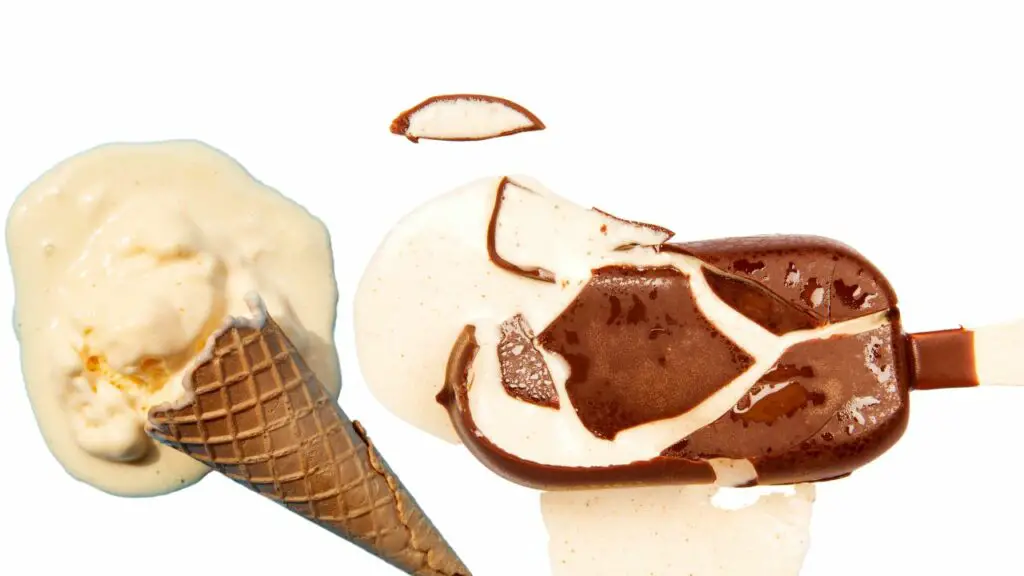
When it comes to ice cream that’s already shaped around a stick or placed in a waffle cone, refreezing becomes a bit trickier.
For ice cream on a stick, the stick itself can cause problems. It can act like a pathway for large ice crystals to form, which will mess up the texture.
Your best bet is to carefully remove the ice cream from the stick and place it in an airtight container. Then, you can go ahead and refreeze it, following the same steps above as you would for a regular tub of ice cream.
As for ice cream in a waffle cone, it’s really not a good candidate for refreezing. The cone is most likely to become soggy already and lose its crispness. If you find yourself with melted ice cream in a waffle cone, it’s better to eat it as is or use it in a different recipe, like a milkshake or smoothie, or just accept your misfortune and move on with your life.
Reviving Melted Ice Cream: Limits of the Ice Cream Maker
When dealing with fully melted ice cream that has lost its texture, attempting to use an ice cream maker may seem like a good idea, but it may not fully restore it to its original texture. The ice cream maker is best suited for the initial churning and freezing process, not for reconstituting fully melted ice cream.
Of course, the success of using an ice cream maker to restore melted ice cream can also vary depending on the type of ice cream maker you have and the specific characteristics of the ice cream itself.
In my personal experience, using a small home ice cream maker that my kids often use didn’t yield satisfactory results. The resulting ice cream turned out to be somewhat icy and lacked the creamy texture and consistency of the original.
Creative Ways to Use Melted Ice Cream

If your ice cream loses its creamy texture after refreezing, don’t worry. You can still have fun with it. Freeze it into popsicles – like ice cream on a stick. Or blend it into yummy shakes and smoothies. If you want something a bit lighter, make a milkshake and mix it with milk or yogurt for a different twist.
You can even use it instead of milk and sugar in cakes or brownie recipes – it tastes great! And if you’re feeling fancy, drizzle it over a fruit salad or apple pie. Get creative – there are lots of tasty possibilities!
Shopping and Storage Tips to Prevent Ice Cream Melting in the First Place
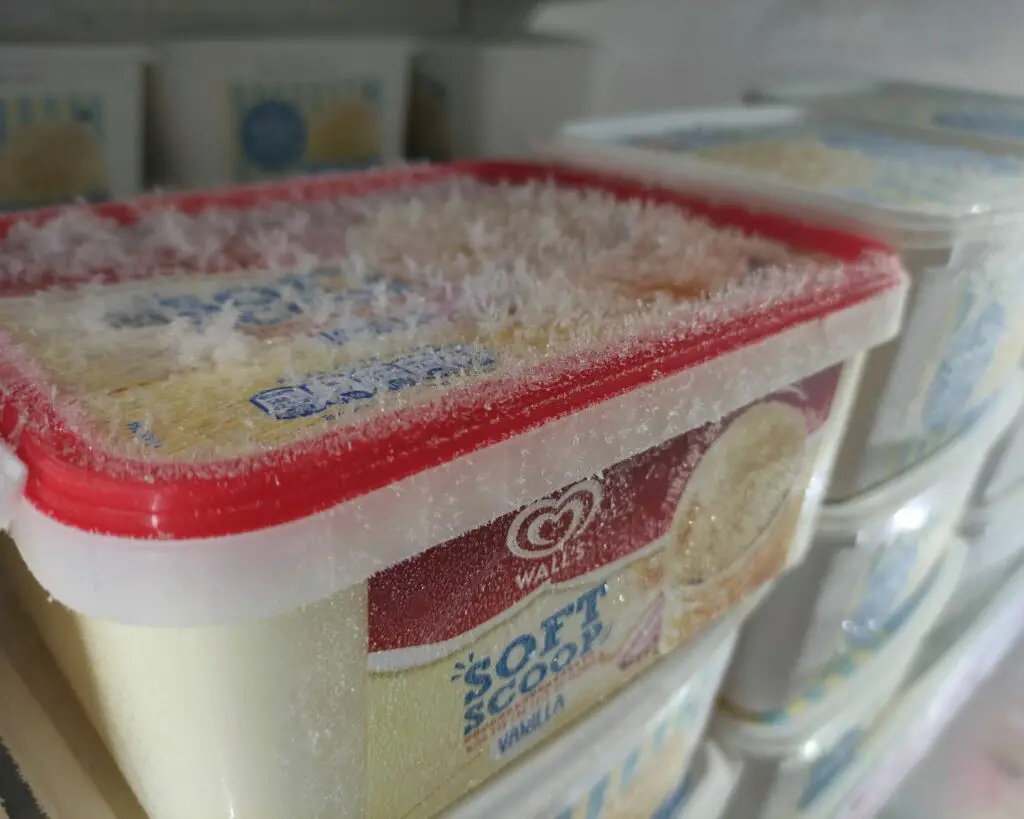
When you’re at the grocery store, there are some additional tips you can follow to ensure that your ice cream remains in optimal condition until you get it home.
- Always make ice cream the last item you pick up: This minimizes the amount of time the ice cream spends outside the freezer, reducing the risk of it melting before you get home.
- Look for packages without ice crystals: Ice crystals on the packaging can indicate that the ice cream has melted and refrozen at some point. This usually means the texture has already been compromised.
- Take from the back of the freezer: Items at the back are generally colder than those at the front. So, reach to the back of the grocery freezer to get the freshest and coldest tub.
- Use an insulated bag with ice packs: This will help keep the ice cream cold during your trip home, especially if you have other errands to run before heading back.
- Once home, place it in the coldest part of your freezer, usually the back. The back of the freezer tends to maintain a more consistent low temperature, which is ideal for preserving the texture and quality of your ice cream.
How Long Can Ice Cream Sit Out, Especially in a Hot Car?
When it comes to ice cream, time and temperature are critical factors—especially in a hot car. Ice cream starts to soften within just 0-20 minutes at room temperature and can begin to melt significantly after 40 minutes.
If it sits out for more than 60 minutes or is left in a hot car for an extended period, it’s not only quality that takes a hit; the ice cream may also become unsafe to consume due to bacterial growth. Bearing this in mind, let’s explore some effective strategies for getting your ice cream home in optimal condition.
How to Keep Ice Cream from Melting on the Way Home?
- Insulated Bag: Use an insulated bag to maintain a low temperature for the ice cream as soon as you pick it up.
- Frozen Gel Packs or Ice: Consider placing frozen gel packs or a bag of ice in the insulated bag to help keep the ice cream cold.
- Direct Route Home: Choose the quickest way home to minimize the time the ice cream spends in your car.
- Air Conditioning: If it’s a hot day, keep your car’s air conditioning on.
- Avoid Hot Zones in Car: Place the insulated bag in a cooler part of the car, like the passenger seat or floor, instead of the trunk or areas in direct sunlight.
Fun Fact: Believe it or not, the color of the bowl or dish you serve your ice cream in can affect its melting rate. Darker colors absorb more heat and can cause the ice cream to melt faster, according to some food scientists.
Conclusion
Refreezing melted ice cream is possible but comes with its set of challenges, both in terms of texture and safety. If done right and within a specific time frame, you can salvage your delicious treat. If not, you’ve still got various creative ways to use your melted ice cream, ensuring it doesn’t go to waste.
The next time your ice cream melts, don’t panic; consult this guide for a solution that works for you.
